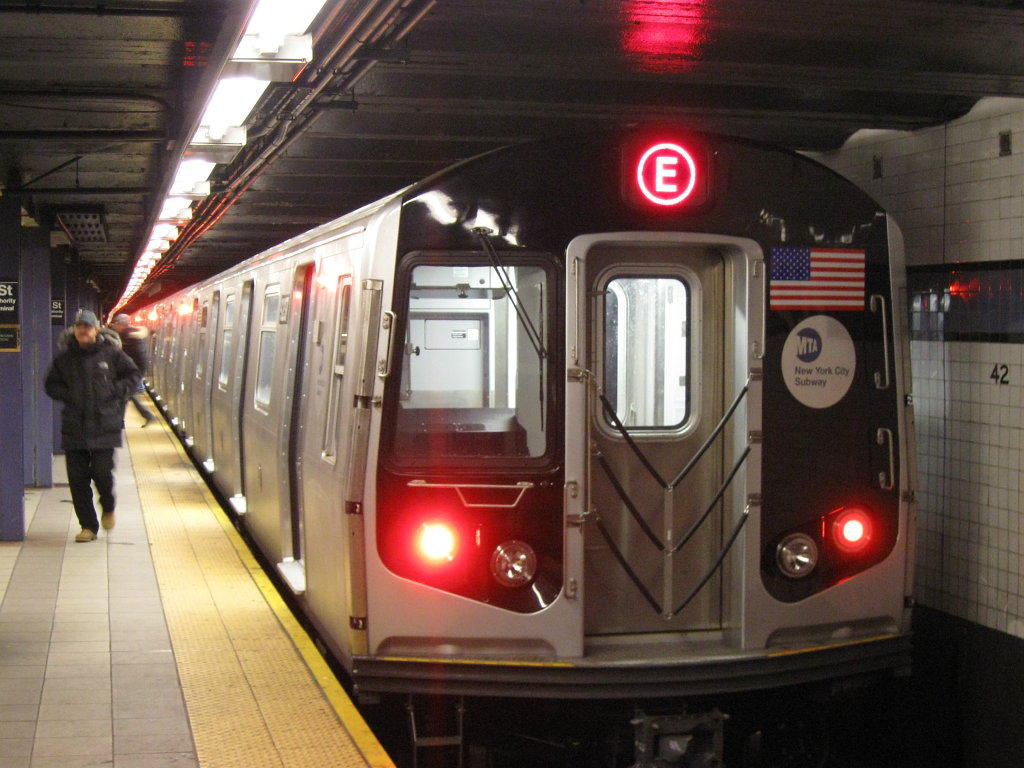 Americans have never been particularly fond of public transit, and have always preferred cars as a primary mode of transportation. This is probably due to the fact that in the U.S., cars are considered a status symbol, an image of high status and wealth, but also because public transportation has been of relatively low quality. However, with gasoline prices soaring, and with more and more people becoming increasingly environmentally conscious, mass transit use in the United States has been growing steadily. The American Public Transportation Association (APTA) reports that this has led to record transit ridership numbers. In 2013, 10.65 billion trips were taken by U.S. transit riders, which is 1.1% more than the year before.
Americans have never been particularly fond of public transit, and have always preferred cars as a primary mode of transportation. This is probably due to the fact that in the U.S., cars are considered a status symbol, an image of high status and wealth, but also because public transportation has been of relatively low quality. However, with gasoline prices soaring, and with more and more people becoming increasingly environmentally conscious, mass transit use in the United States has been growing steadily. The American Public Transportation Association (APTA) reports that this has led to record transit ridership numbers. In 2013, 10.65 billion trips were taken by U.S. transit riders, which is 1.1% more than the year before.
Public Transportation Use Climbing for More Than a Decade
2013 ridership figures represent a 37% jump in mass transit use compared to 1995. The U.S. population has grown by 20%, and the amount of vehicle miles driven over the same period has increased by 22%. In each of the past eight years, the number of trips has topped 10 billion. The previous all-time high was recorded in 2008, when 10.59 billion trips were made.
Growth Attributed to Urbanization, Higher Employment Rates and Improved Public Transport Services
The APTA has listed several factors that have contributed to the surging use of mass transit. For one thing, many cities have added new rail and bus lines to their existing public transport systems, making them much more viable and efficient. Furthermore, the association believes that the recovering economy affects public transport use, as well. As employment rates increase, the number of people that commute to work by bus and train, also increases. While high gas prices are usually considered to be the biggest factor that makes people use public transport instead of driving their own cars, it’s not the single most important factor. Today, the average price of a gallon of gas nationwide is somewhere around $3.50, which is much lower than it used to be a couple of years ago.
The increased urbanization also has an impact on people’s transportation habits. The urban population in the United States has grown immensely in the past 15 years, which has increased the potential customer base for transit systems around the country. For people in urban areas. public transit is a more affordable, practical, and convenient transport option than owning a car. So, as the population in U.S. cities grows, the use of mass transit is going to increase, as well.
Mass Transit Use Growing in Small Cities
While record transit ridership growth in major metropolitan areas like Los Angeles and New York is expected, bus and rail ridership has also been drastically increasing in small cities, with less than 100,000 people. Cities like Lewisville, Texas; Flagstaff, Arizona; Ann Arbor, Michigan; and Fort Myers, Florida, are reporting record ridership.
Mass transit ridership growth since 1956, compared to the population growth in the same period, hasn’t increased in absolute terms. Public transit use hasn’t outpaced population growth, but the fact that the total number of trips has been rising constantly over the past several years, does indicate a growing trend to use public transit and shows that more and more Americans are turning away from driving.
For now, driving is still important. For help getting you permit, take a comprehensive practice test.